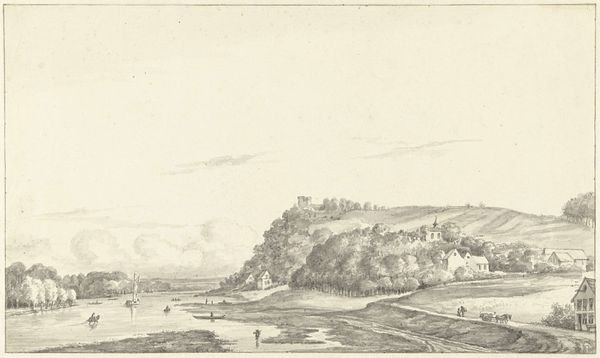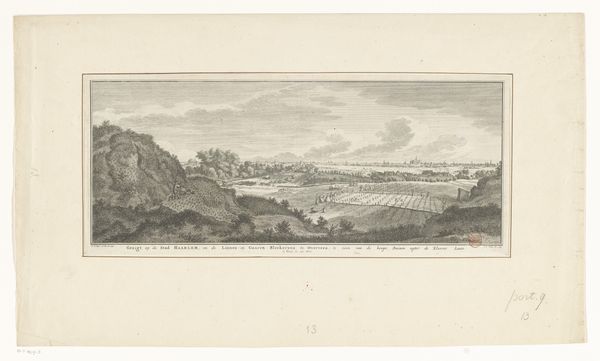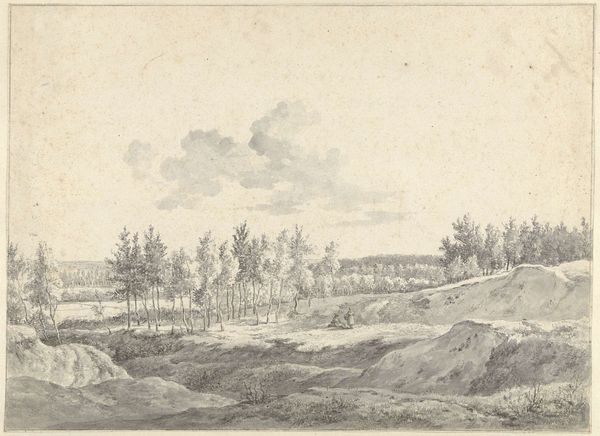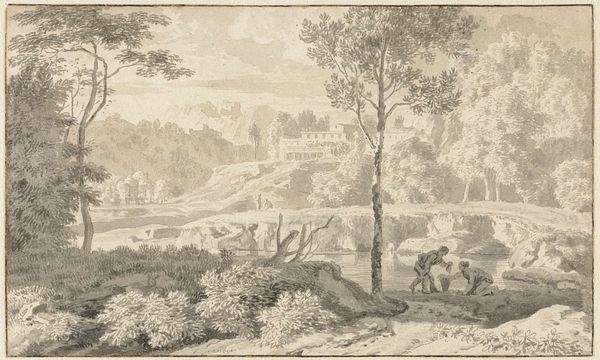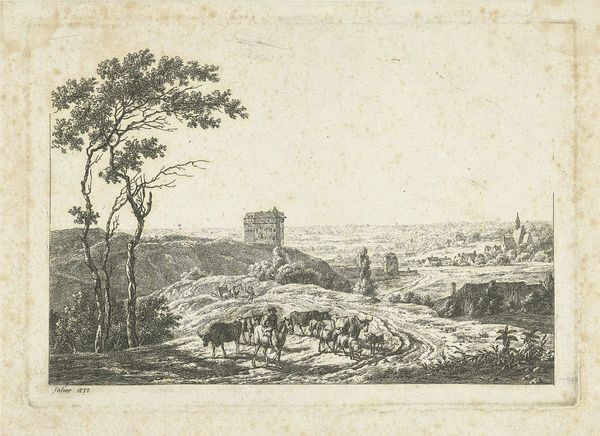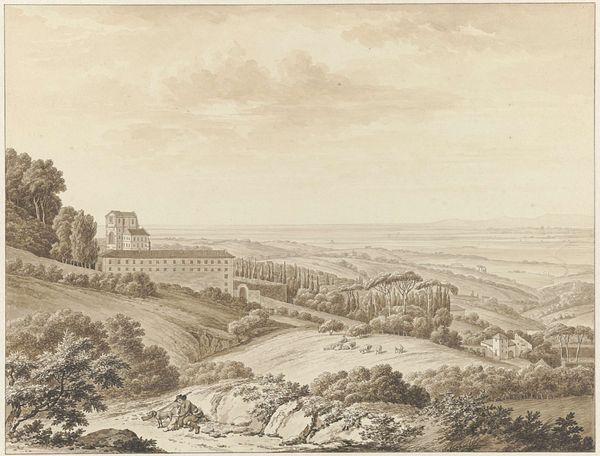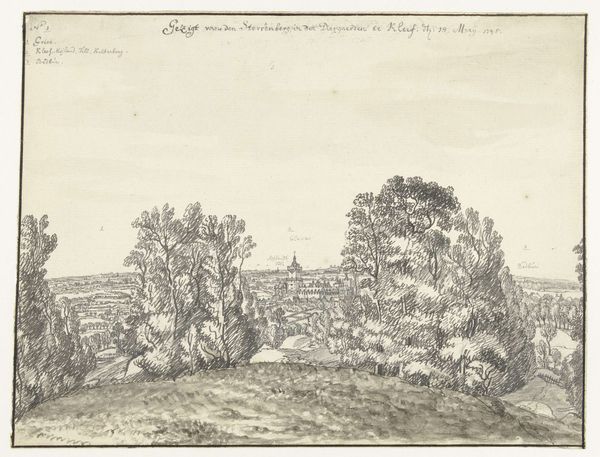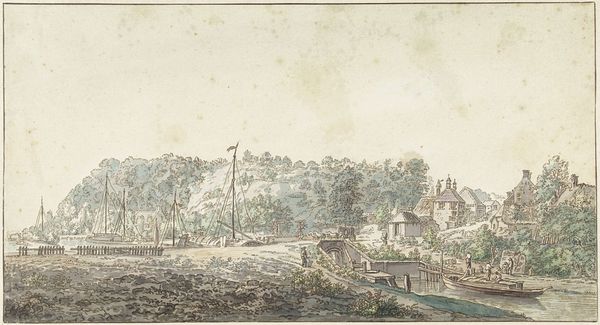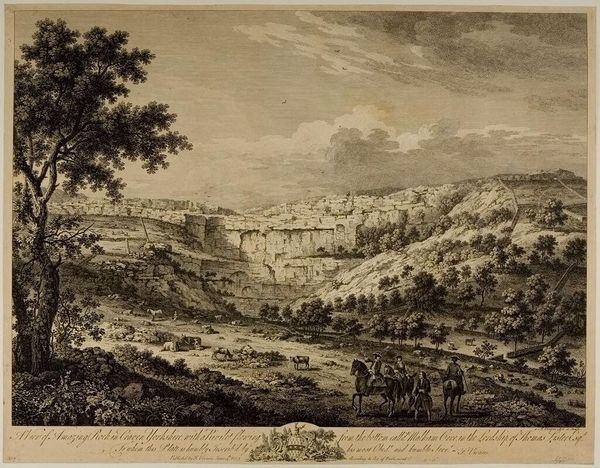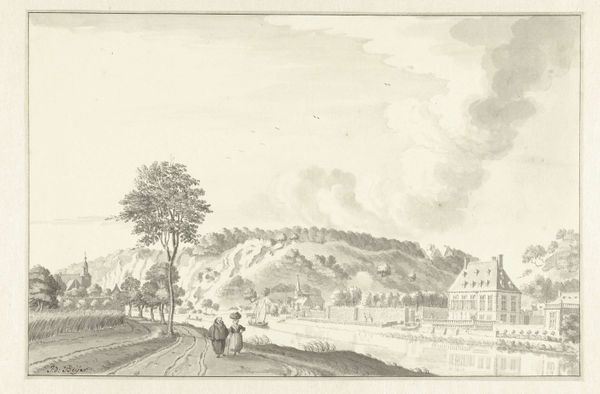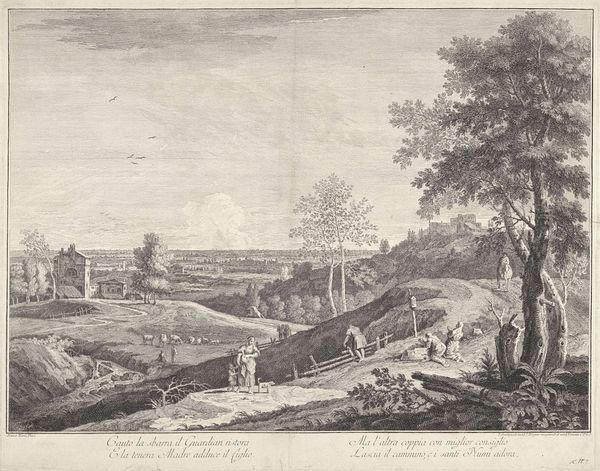
print, etching
#
dutch-golden-age
# print
#
etching
#
landscape
#
etching
#
realism
Dimensions: height 200 mm, width 250 mm
Copyright: Rijks Museum: Open Domain
Editor: So, this etching is "View of Wageningen, from the East" by Hendrik Hoogers, made in 1786. It's a pretty tranquil scene; lots of open space, sheep grazing...it feels very pastoral and composed. What do you see in this piece? Curator: Beyond the idyllic surface, I see a document subtly reflecting the power dynamics of the Dutch Golden Age and its legacy. The vast landscape dwarfing the shepherd and sheep hints at humanity's relationship to the land – a relationship often defined by ownership and control. How do you see that playing out in the visual rhetoric? Editor: Well, the composition does create a hierarchy. But, I guess I hadn't really thought of it in terms of power… It seems more focused on showing the harmony between people and nature. Curator: Perhaps. But think about the historical context: land ownership, agricultural labor, the increasing urbanization… Were these harmonious times for everyone? Or were some excluded from this 'harmony'? The way Hoogers idealizes this scene—doesn't it remind you of the visual strategies colonizers have used? Editor: I see your point. It’s easy to romanticize the past without considering the social and political complexities. Looking at it through that lens, it raises questions about whose perspective is being represented and whose stories are being left out. Curator: Exactly! By examining seemingly simple landscape etchings, we can excavate these layers of meaning. Art is rarely neutral; it actively shapes our understanding of the world. What does it reveal to you now? Editor: Now, I am more attentive to the selective nature of the composition and what isn't pictured beyond that idyllic foreground. It speaks volumes about social landscapes and hidden figures within 18th-century Holland. Curator: Precisely. The silence of art can be as potent as its visual statements.
Comments
No comments
Be the first to comment and join the conversation on the ultimate creative platform.
